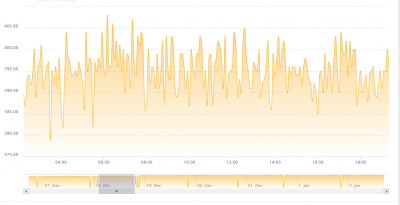- Joined
- Jan 5, 2019
- Messages
- 122
- Reaction score
- 217
Current Pictures (Apr 2020)





Stocking list, in order of addition:
After a 10-year hiatus from the hobby, my wife and I settled in a long-term home and I finally had an opportunity to build my dream reef. The home was a new build, and we were given the opportunity to remove the wall between the den and dining room to make one large, 22.5'x12.5' room- the perfect space for a peninsular room-dividing aquarium! Even better, the room was right above the basement mechanical area, making a basement sump practical. The perfect solution for me was the Red Sea Reefer 650.
Goals:
I have learned so much from this forum, and hope that I can share my experiences and setup with other members. The tank is now about 9 months old, and as you can see, there is lots of stocking left to go. Over the coming weeks, I will be posting about:
Tank Shots (October 2019):
Right side:

Left Side:

End side:

End/Right side:

Stocking list, in order of addition:
- 2x Ocellaris clowns
- 1x Radial fliefish
- 1x Yellow Watchman Goby
- 1x Melanurus Wrasse
- 1x Golden Midas Blenny
- 3x Lyretail anthias
- 1x One-spot Foxface
- 1x Rhombodialis Wrasse
- 1x Flame Wrasse
- 1x McCosker's Wrasse
- 3x Blue-Green Chromis
- 1x Purple Tang
- ~20x Trochus Snails
- ~15x Blue-legged hermit crabs
- 8x Strawberry Conch
- 2x Halloween Hermit crabs
- ~5x Nassarius snails
- 6x Pencil Urchins
- 1x Tuxedo urchin
- 1x Emerald Crab
- 1x Porcelain crab
- 1x Tiger pistol shrimp
- Tank/ Stand/ Sump: Red Sea Reefer 650
- Lighting: 4x AI Hydra 26 HD
- Flow: 2x MaxSpect Gyre XF350
- Sand: 30lbs Tropic Eden Miniflakes, 30lbs Tropic Eden ReefFlakes
- Rock: ~90lbs Caribsea Liferock Shapes
- Heaters: 2x Cobalt NeoTherm 300W
- Refugium Light: Kessil H160
- Skimmer: Reef Octopus Regal 200INT with Automatic Neck Cleaner
- Mechanical Filtration: Clarisea SK-5000
- UV Sterilizer: Pentair Smart UV 40 Watt
- Return Pumps: 2x Varios 8 (not happy with these, one will be replaced)
- Controls: Neptune Apex, 2x EB832, 3x FMM, 3x DOS, 2x DDR, 1x ATK, 1" & 1/2" Flow sensor
After a 10-year hiatus from the hobby, my wife and I settled in a long-term home and I finally had an opportunity to build my dream reef. The home was a new build, and we were given the opportunity to remove the wall between the den and dining room to make one large, 22.5'x12.5' room- the perfect space for a peninsular room-dividing aquarium! Even better, the room was right above the basement mechanical area, making a basement sump practical. The perfect solution for me was the Red Sea Reefer 650.
Goals:
- A beautiful, living room divider for our new home.
- Minimal livestock losses and impact on natural reefs
- Low maintenance, with as many tasks and parameters automated as possible
- A variety of soft, LPS, and SPS corals comprised of a variety of bright colors
- Peaceful, colorful fish
- Redundant systems to minimize the possibility of losses due to equipment failure
- Minimalist design, with few visible wires and pumps
- Watch livestock grow from juveniles/small frags to adults/colonies
I have learned so much from this forum, and hope that I can share my experiences and setup with other members. The tank is now about 9 months old, and as you can see, there is lots of stocking left to go. Over the coming weeks, I will be posting about:
- Strengthening floors for a peninsula aquarium
- Plumbing a basement sump
- Saltwater Mixing Station and Automatic water change system
- Automation, maintenance-reducing strategies and my preventative maintenance schedule
- Nutrient Removal Systems and Strategies
- Nutrient Replenishment Systems and Strategies
- Electrical Wiring and Backup
- Livestock selection & comments
Tank Shots (October 2019):
Right side:
Left Side:
End side:
End/Right side:
Last edited:



















